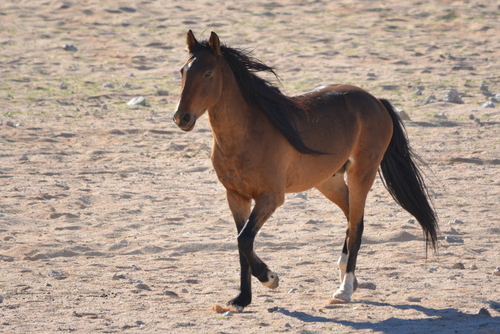
Domestic horse
The domestic horse (Equus caballus) is a symbol of grace and endurance, famed for its agility and social nature. With a storied history of partnership with humans, horses continue to captivate with their majestic form and unique bonding behaviors within herds, essential to many ecosystems globally.
25-30 years
Lifespan
380.0 - 550.0 kg
Weight
Brown, Black, White
Color
40 mph
Top Speed
Distribution Range of the Domestic horse
The species Equus caballus, commonly known as the horse, originated in North America. The genus Equus first appeared in the North American fossil record during the Pliocene epoch. Horses were later reintroduced to North America by European settlers in the 16th century after becoming extinct in the region approximately 10,000 years ago. Today, horses can be found on every continent except Antarctica, although they are not considered native to many of these areas.
Domestic horse's Habitat
Environmental Conditions
Horses are highly adaptable animals that can thrive in a variety of environmental conditions. They are commonly found in temperate grasslands, savannas, semi-arid regions, steppes, and woodlands. As domesticated animals, horses also inhabit human-modified landscapes, such as farms, ranches, and other managed pastures.
Ecological Niche
Horses are grazing herbivores, primarily feeding on grasses, although they may also consume leaves, bark, and shrubs when other food sources are scarce. Their ecological role includes maintaining the health of grassland ecosystems by grazing, which can help control vegetation growth and contribute to biodiversity. Horses can also influence seed dispersion through their dung. In regions where they are feral, such as parts of North America and Australia, horses can significantly impact native vegetation and compete with indigenous species for resources.
Copyright @ Nature Style Limited. All Rights Reserved.
 English
English